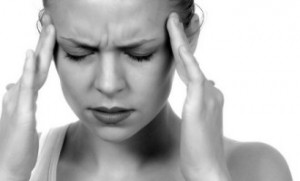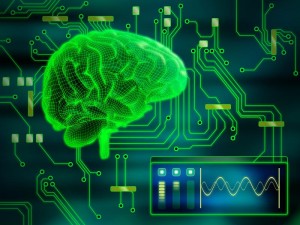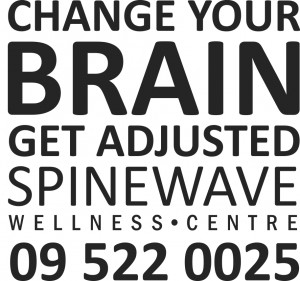 Some controversy has been sparked recently about the myth of PMS or premenstrual stress. A literature review from Otago University intended to tease apart the cultural bias that if a woman is distressed or anxious, it’s directly linked to her menstrual cycle. Of 47 English language studies identified, 40% found no association of mood with any phase of the menstrual cycle and only 15% found an association of negative mood with the premenstrual phase.
Some controversy has been sparked recently about the myth of PMS or premenstrual stress. A literature review from Otago University intended to tease apart the cultural bias that if a woman is distressed or anxious, it’s directly linked to her menstrual cycle. Of 47 English language studies identified, 40% found no association of mood with any phase of the menstrual cycle and only 15% found an association of negative mood with the premenstrual phase.
The argument is that there may be other explanations for a woman’s mood swings: social or physical processes; home or work life. While this is true and every problem is multi-factorial, the reality is that women have a uterus and this can cause some issues every month. The hormones estrogen and progesterone, which play key roles in regulating the menstrual cycle and pregnancy, may affect headache-related chemicals in the brain. A drop in estrogen before a period can spark pain processes. This is called an estrogen-withdrawal headache.
 Estrogen dominates the first half of the menstrual cycle and prepares the ovaries for ovulation. It causes buildup of the endometrial lining of the uterus, peaking at mid-cycle (ovulation). Progesterone is not produced by the ovaries until after ovulation. Progesterone is responsible for maintaining and ripening the uterine lining so that it is receptive to implantation should pregnancy occur. If no pregnancy occurs, a drop in progesterone (and estrogen) levels activates menses to flush out the uterine lining and causes the body to eliminate the extra nutrients it has stored – and the cycle begins again.
Estrogen dominates the first half of the menstrual cycle and prepares the ovaries for ovulation. It causes buildup of the endometrial lining of the uterus, peaking at mid-cycle (ovulation). Progesterone is not produced by the ovaries until after ovulation. Progesterone is responsible for maintaining and ripening the uterine lining so that it is receptive to implantation should pregnancy occur. If no pregnancy occurs, a drop in progesterone (and estrogen) levels activates menses to flush out the uterine lining and causes the body to eliminate the extra nutrients it has stored – and the cycle begins again.
A menstrual migraine can occur around ovulation because chemicals called prostaglandins are released from the endometrial lining and can stimulate pain receptors. There is also a drop in magnesium levels and chemicals which inhibit pain in the head. Estrogen-withdrawal headaches may also include symptoms like breast tenderness and pelvic pain.
This process is very real for women and occurs every month. While some are affected worse than others, if one is not partial to extreme solutions like removing the uterus entirely or setting up the potential risk of cancer through hormone replacement therapy, the body needs to be managed through this time in an effective way.
 The neuroendocrine system is called such because the nervous system and hormones work together. When one goes out of sync, the other responds accordingly. This is called adaptation and the spine plays a key role in it.
The neuroendocrine system is called such because the nervous system and hormones work together. When one goes out of sync, the other responds accordingly. This is called adaptation and the spine plays a key role in it.
The spine is the brain’s circuit board for the body. When it’s overloaded and starts short circuiting (at “that” time of the month) the spine will misalign to adapt to the overload. This in itself can cause pain, but to deal with the overload menstruation can create, getting adjusted helps the body regulate itself better; faster.
Allostasis is the process of achieving nervous system stability through physiological or behavioural change. When the nervous system fails to adapt, you get sick. At Spinewave we measure the ability of your nervous system to adapt by performing consistent pattern analysis with technology.
In the words of Robert Frost, life goes on, and so will your menstrual cycle until after menopause. So the best option for now – if you want to do things naturally – is supplemental support and cleaning life’s stains on the nervous system by getting checked regularly by your chiropractor.
There was a time when I didn’t need a calendar, diary or phone app to tell me when my monthly period was due. I knew this time was imminent by the most intense migraine and stiffening of my neck preceding it. This headache would often cause nausea and an inability to function, all the while feeling as though if I just slept it off, I’d be fine. Of course, being a working mum, this is nigh on impossible. So with a hefty dose of Nurofen Plus (codeine) and/or Voltaren (paracetamol and ibuprofen didn’t cut it) I got through that one awful week each month. This went on for years.
Not long after starting to see Neil on a weekly basis we noticed that while the headaches still arrived monthly, they were a lot less vicious and I was able to cope a lot better (allostasis). Very soon we started tracking my cycle and having an adjustment just before it was “due”. This served to lessen the force of the headaches even more and I no longer got the stiffening of my neck.
Here we are today and I do not need my calendar, diary or phone app to track things as I hardly ever have a headache and generally sail through this week that I used to dread. I also no longer have a box of Nurofen Plus or little pink pills stashed in the cupboard and my handbag.
I mentioned earlier that I was pretty much dependent on the codeine and the pain killers to get me through. Given that this had been going on for years, a horrible side effect of this level of codeine in my system was chronic constipation. Even after many visits to naturopaths and dietiticians, no one picked that it could be the codeine causing it. It’s not just the headaches I’m now free of!
The years of peri-menopause are starting now and are bringing their own challenges, however I have every faith that Neil and I will find a way through it.
Cheryl Smith
© Dr Neil Bossenger 2012

